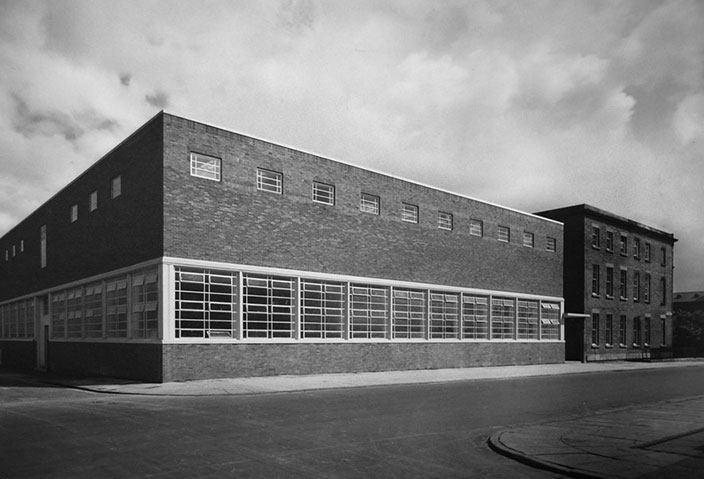However, it was also to prove a significant step for the wider international design community. As David Thistlewood noted in his centenary review of the school in 1995,
To reflect on the history of the School of Architecture is to discover a microcosm of ... twentieth-century architectural influences and values. 1
Under Sir Charles Reilly's influence it became the first university School of Architecture to design and run RIBA accredited degrees in architecture from 1902 and the school would go on to number six Gold Medal winners among its graduates and staff, and to establish an international reputation as a centre of excellence in architectural research and education. Those influential figures who have achieved eminence in the fields of architecture, architectural education and planning include Sir James Stirling; Lord Holford; Edwin Maxwell Fry; Sir Peter Shepheard; Sir Stirrat Johnson-Marshall; Sir Patrick Abercrombie; Gordon Stephenson; and Colin Rowe. The school's architect graduates such as Herbert Rowse, Harold Dod, Frank Williamson and Maurice Lyon built many important buildings in Liverpool, but they also spread a style of architecture that became known as the 'Liverpool Manner' around the world from Johannesburg to Cairo.
The school continues to produce architects of outstanding quality and influence including Jonathan Falkingham, co-founder of the groundbreaking firm of Urban Splash and architect / director of ShedKM, which have pioneered the regeneration of the city centres of Liverpool and Manchester together with other schemes throughout the UK; Jim Eyre of the firm Wilkinson Eyre, designer of the Millennium Bridge, Gateshead, the Liverpool Echo Arena and Conference Centre, as well as numerous international projects; and multiple RIBA prize-winner Jonathan Ellis-Miller.
The Liverpool School of Architecture of course remains an important part of the cultural life of the City of Liverpool and the city's outward-looking international focus is intertwined with both the University of Liverpool and the school's research and teaching agenda.
Quentin Hughes, one of the school's esteemed teachers, writing in his seminal book Seaport said of Liverpool,
This seaport is a world city looking out across the Atlantic, linked to the Americas and the Eastern trade, not parochial and introvert... 2
Like the city, those who began their architectural careers here have also proven to be neither parochial or introvert.
Professor Robert Kronenburg, Roscoe Professor of Architecture
From The World in One School, The History and Influence of the Liverpool School of Architecture 3
Heads of School
Ola Uduku (2021- )
Soumyen Bandyopadhyay (2016-2021)
Andrew Crompton (2013-2016)
Andre Brown (2009-2013)
Robert Kronenburg (2005-2009)
David Dunster (1995-2000)
Simon Pepper (1990-1995, 2000-2005)
John Tarn (1973-1990)
Robert Gardner Medwin (1952-1973)
Lionel Bailey Budden (1933-1952)
Sir Charles Herbert Reilly (1904-1933)
Frederick Moore Simpson (1894-1904)
1 David Thistlewood, Liverpool School of Architecture: Centenary Review,
The Architects' Journal, 11 May 1995, p. 60.
2 Quentin Hughes, Seaport: Architecture and Townscape in Liverpool,
London, Lund Humphries, 1964.
3 Jack Dunne & Peter Richmond The World in One School, The History and Influence of the Liverpool School of Architecture,
Liverpool University Press, 2008
Back to: School of Architecture
